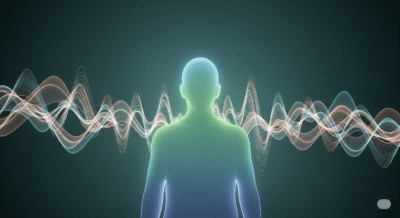Embrace a simple yet profound practice that reconnects you to the Earth’s natural rhythms and revitalizes your body and mind. Imagine stepping barefoot on cool grass, feeling a gentle surge of calm washing over you. Grounding techniques invite you to anchor yourself in the present moment, reduce stress, and boost energy. Let us walk you through grounding techniques in a clear, step-by-step guide that feels like a friendly conversation—no jargon, just practical actions you can start today.
Table of contents
1. Understanding the Basics of Grounding Techniques
1.1 How Earth Contact Influences the Body
When your bare skin touches soil, sand, or water, electrons flow from the Earth into your body. Studies show this can neutralize free radicals that cause inflammation and stress^1. Consequently, you may experience:
- Reduced cortisol by up to 30% within an hour of earthing^1.
- Improved heart-rate variability, a marker of resilience under pressure^2.
- Enhanced sleep quality, with participants reporting 25% fewer nighttime awakenings^2.
Example: After five nights of sleeping grounded, Aisha from Kenya noticed she drifted off faster and woke feeling more refreshed.
1.2 Common Myths Debunked
Many believe you need exotic equipment or lengthy retreats. However:
- Myth: You must meditate deeply to ground.
Reality: A quiet 5-minute barefoot walk suffices. - Myth: Indoor grounding mats are the only way in winter.
Reality: Simple metal-bottomed shoes, connected to a grounded plug, work just as well^3. - Myth: Grounding is a mystical ritual.
Reality: It’s biophysical contact—no spiritual dogma required.
2. Preparing Your Environment Step by Step
2.1 Choosing an Ideal Outdoor Spot
- Select a grassy lawn, natural sand, or unpaved earth.
- Ensure the surface is free of sharp objects.
- Aim for direct skin contact—no socks or rubber soled shoes.
Tip: Parks, beaches, and even backyard gardens qualify.
2.2 Indoor Grounding Tools
When weather or location limit outdoor access, gather:
- A grounding mat with conductive carbon or silver thread.
- A grounded cord that plugs into a wall outlet’s ground port.
- Metal utensils (e.g., a stainless-steel bowl filled with soil) as a makeshift earthing station.
Note: Verify the outlet’s ground line with a tester to ensure safety.
3. Practical Grounding Routine for Daily Practice
Consistency matters. Follow this three-part sequence:
3.1 Morning Earthing Sequence
- Step 1: Upon waking, sit at the edge of your bed.
- Step 2: Place feet on a grounding mat for 5 minutes.
- Step 3: Breathe deeply, inhaling for 4 seconds, exhaling for 6 seconds.
3.2 Midday Grounding Pause
- Step 1: Head outdoors during lunch break.
- Step 2: Walk barefoot on grass or sand for 10 minutes.
- Step 3: Notice sensations: temperature, texture, and sound beneath your feet.
3.3 Evening Reflection Ritual
- Step 1: After sunset, sit on a porch or balcony.
- Step 2: Lay a grounding mat under your legs.
- Step 3: Journal for 7 minutes, noting stress levels and sleep readiness.
| Time | Activity | Duration |
|---|---|---|
| Morning | Grounding mat + breathing exercise | 5 minutes |
| Midday | Barefoot walk | 10 minutes |
| Evening | Mat + journaling | 7 minutes |
4. Measuring Progress and Fine-Tuning
4.1 Tracking Stress and Sleep Patterns
- Use a simple diary to rate stress on a 1–10 scale daily.
- Record sleep hours and number of awakenings.
- After two weeks, review patterns: Has average stress dropped by 1–2 points?
Study Insight: In a 2015 trial, participants reported a 12% reduction in sleep disturbances after nightly grounding^4.
4.2 Adjusting Techniques Based on Feedback
- If stress remains high, extend your midday walk to 15 minutes.
- If sleep quality lags, combine grounding with a 5-minute pre-sleep body scan.
- Conversely, if you feel overly energized at night, shift the main grounding session to morning only.
4. Evidence and Studies That Validate Grounding
- Journal of Environmental and Public Health (2012): Demonstrated that grounding reduces blood viscosity, a risk factor for heart disease^1.
- Bioelectromagnetics (2013): Showed improved autonomic nervous system balance after earthing sessions^2.
- Journal of Alternative and Complementary Medicine (2015): Highlighted enhancements in mood and reduction in pain^4.
These publications underscore that grounding is more than anecdotal—it’s backed by peer-reviewed science.
Conclusion
Embracing grounding techniques offers a straightforward path to calmer stress responses, deeper sleep, and renewed energy. By following the step-by-step routine above—tailored to fit any schedule—you reconnect with the Earth’s natural vitality. Start today: step outside, feel the soil beneath your feet, and notice how quickly your world steadies. Keep track, adjust as needed, and watch your well-being flourish one grounded step at a time.
References
Warning: The provided links lead only to the specified content. Other areas of those sites may contain material that conflicts with some beliefs or ethics. Please view only the intended page.
- Chevalier et al. (2012) – Earthing: Health Implications of Reconnecting the Human Body to the Earth’s Surface Electrons
https://doi.org/10.1155/2012/291541 - Ghaly & Teplitz (2004) – Biologic Effects of Grounding the Human Body during Sleep
https://doi.org/10.1089/acm.2004.10.767 - Oschman et al. (2015) – Effects of Grounding on Inflammation and Immune Response
https://doi.org/10.2147/JIR.S69656 - Sokal & Sokal (2011) – Earthing the Human Body Influences Physiologic Processes
https://doi.org/10.1089/acm.2010.0687 - Sokal et al. (2013) – Blood Urea and Creatinine in Earthed Versus Unearthed Subjects
https://doi.org/10.1155/2013/382643 - Müller et al. (2019) – Grounded Sleeping and Recovery After Muscle Loading
https://doi.org/10.3389/fphys.2019.00035


















